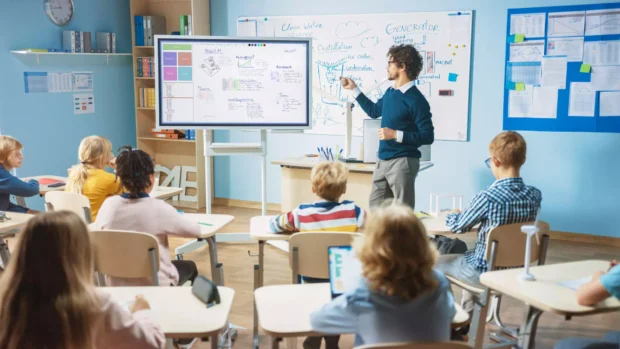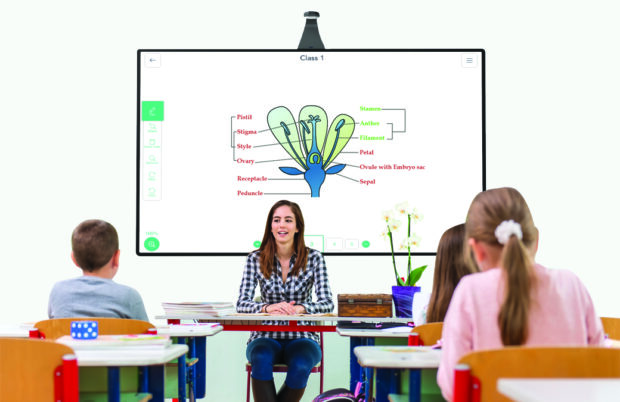As a teacher, you know that one of the most important and used tools in your classroom today is the interactive whiteboard. This technology has revolutionised education by providing students with both an engaging and fun way to learn. There are many benefits to using interactive screens in the classroom, some include;
- Interactive whiteboards help students learn better by breaking down complex subjects into smaller, more manageable chunks.
- These interactive screens help teachers keep track of student progress while also allowing teachers to provide feedback immediately.
- They are great for collaborative learning, as students can work together on projects on the board.
The Role of Interactive Whiteboards in Classrooms

Interactive whiteboards are being used more frequently in classrooms across the country as a way to help students learn, as discussed in this article. The role of the interactive white in classrooms is simple;
- Interactive whiteboards can help students retain information more effectively.
- They can be used to engage students in class discussions, which can help in retaining information and also engaging in conversation.
- They can provide teachers with easy ways to track student progress, which can help when planning future lessons and allocating homework.
Benefits of Using Interactive Whiteboards in Classrooms
Interactive whiteboards are becoming increasingly popular in classrooms as they provide countless benefits for students and educators alike, including;
- Improved engagement and learning. Interactive whiteboards allow students to be more involved in the class, learning faster due to their active participation. In fact, a study by the Technology Research Group at Virginia Commonwealth University found that students who use an interactive whiteboard learn twice as fast as those who do not.
- Reduced boredom and distraction. With a great amount of content available on an interactive whiteboard, students are less likely to become bored, distracted and restless in the classroom. This allows students to stay focused on the lesson and learn more effectively.
- Enhanced collaboration. By allowing students to work together on projects or tasks, they can develop teamwork skills that will help them succeed in future endeavors.

There are many benefits of using interactive whiteboards in classrooms and schools should explore all possibilities before making a decision on the perfect board for their classrooms. By incorporating this technology into their lessons, they will be able to improve student engagement while also reducing boredom and distraction.
How to Use an Interactive Whiteboard in a Classroom?
There are many different ways to use an interactive whiteboard in a classroom. This can include having the teacher write questions on the board and then have students answer them, or even having students draw pictures on the board and have the teacher describe what they are seeing. This engagement between the student and the teacher can help in a child’s learning progression.
Another way to use an interactive whiteboard is to have students create simulations on the board. This can be a simulation of a game they are playing or a movie they are watching. These visual lessons can help children absorb information easily.
Tips for Improving Student Learning with an Interactive Whiteboard

Getting an interactive whiteboard for your classroom can be very exciting. To help you during this time, we have created a simple check list that you can follow to help improve your students learning with an interactive whiteboard.
- Make sure the board is properly set up and calibrated before use.
- Offer students opportunities to practice using the board prior to class.
- Encourage students to create collaborative projects using the board.
- Provide helpful tips and tutorials on how to use the board effectively.
- Ensure that all students have allocated and supervised access to the board, so they can benefit from its use.

